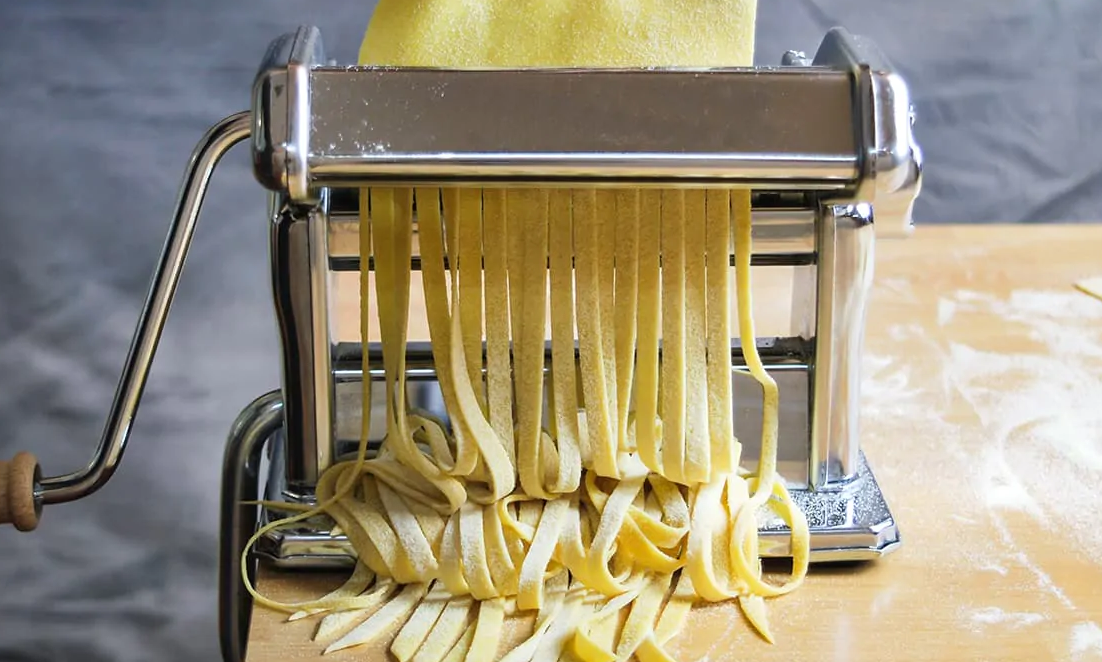Pasta is a beloved food around the world. One of the main reasons why people enjoy eating pasta is its versatility. It can be prepared in many ways and paired with various sauces and ingredients, catering to multiple tastes. Also, pasta is often associated with comfort food, providing warmth and satisfaction when consumed. Its ease of preparation also makes it a popular option for busy weeknights.

Pasta is a nutritious food rich in complex carbohydrates, providing the body with energy. It can also be combined with vegetables and lean proteins to create a balanced meal. Moreover, pasta is an affordable food option, making it accessible to people of all budgets.
The cultural significance of pasta cannot be overstated, particularly in Italy, where it is a staple food. Enjoying pasta can be a way to connect with different cultures and experience their cuisine. Overall, pasta’s versatility, comfort, convenience, nutrition, affordability, and cultural significance are why people enjoy eating it.
Does Pasta Contain Egg?
Pasta does not usually contain eggs. Traditional Italian pasta, such as spaghetti, fettuccine, and linguine, is typically made from a mixture of durum wheat flour and water and does not contain eggs. However, some types of pasta, such as egg noodles, are made with eggs. These types of pasta will typically have a yellow color and a slightly different texture than pasta made without eggs.
It’s essential to read the ingredient labels or check with the manufacturer to determine whether a pasta product contains eggs, especially if you have an allergy or dietary restriction.
Traditional Italian pasta recipes typically do not include eggs and use only durum wheat flour and water. This is because durum wheat flour is high in protein and gluten, which helps the pasta hold its shape and texture when cooked. Therefore, adding eggs to the pasta dough can change the texture and flavor of the pasta, and it may not have the same texture and chewiness that people associate with traditional Italian pasta.
Additionally, some people may have allergies or dietary restrictions that require them to avoid eggs. Using only durum wheat flour and water can be a great alternative to egg-based pasta.
Pasta made with eggs, durum wheat flour, and water has a slightly different taste and texture than pasta made only with durum wheat flour and water. Adding eggs gives the pasta a richer flavor and a golden color, making it more visually appealing. The egg also adds a bit of richness and complexity to the texture of the pasta, making it slightly denser and chewier than pasta made without eggs.
The exact taste and texture of egg-based pasta can vary depending on the type of pasta, the number of eggs used, and the cooking method. Egg noodles, for example, are a type of pasta explicitly made with eggs and flour, and they have a distinct texture and flavor that sets them apart from other types of pasta.
Recipe to make Italian pasta without eggs
Ingredients:
- 2 cups of durum wheat flour (semolina flour)
- 2/3 cup of water
Instructions:
- Pour the flour onto a clean work surface, making a well in the center.
- Slowly add water into the well while mixing it with the flour with your fingers or a fork.
- Continue mixing the flour and water until a dough forms.
- Knead the dough for about 10 minutes until it becomes smooth and elastic.
- Wrap the dough in plastic wrap and let it rest for about 30 minutes.
- After the dough has rested, roll it into thin sheets using a rolling pin or pasta machine.
- Cut the pasta into your desired shape, such as spaghetti, fettuccine, or linguine.
- Cook the pasta in a pot of boiling, salted water for about 2-3 minutes or until it’s cooked to your liking.
- Serve the pasta with your favorite sauce or toppings.
- How Many Tablespoons is One Clove of Garlic? - June 26, 2024
- How to Measure 3/4 Cup When You Don’t Have the Right Measuring Cup? - June 6, 2024
- How Much Does Cooked Pasta Weight Compare To Dry? - April 30, 2024
